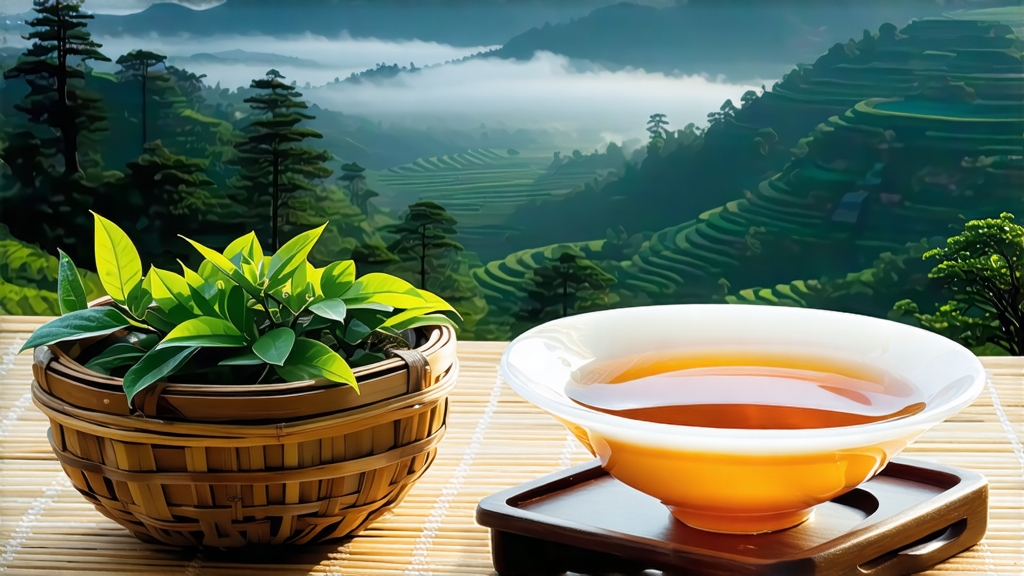
Alishan High-Mountain Oolong, known in Taiwan as “Alishan Qing Xiang Oolong,” is one of the most celebrated sub-categories of Chinese-language oolong tea, even though its terroir lies just across the strait on the rugged island of Taiwan. International drinkers often meet it first among “gaoshan” (high-mountain) teas because its fragrant, creamy character translates effortlessly into any language. Yet behind the floral perfume and jade-green leaves lies four centuries of cultivar migration, wartime interruption, post-war innovation, and a 1970s agricultural renaissance that turned a forested ridge into a cloud-veiled tea garden.
History
The tea bush arrived in Taiwan with Fujian immigrants during the late Ming dynasty, but Alishan itself remained a cedar- and camphor-laden wilderness until the Japanese colonial government (1895-1945) pushed a railway up the slope to harvest timber. Japanese agronomists planted the first Assamica seedlings for black tea export, yet it was the fleeing Kuomintang veterans of the 1950s who grafted Fujian’s Qing Xin (Tender Heart) cultivar onto those abandoned clearings. At 1,200–1,600 m elevation the plants met a perfect storm of horticultural luck: subtropical sun in the morning, Pacific fog by noon, and crisp mountain air at night. By 1983 the Taiwanese Tea Research and Extension Station had codified “Alishan Qing Xiang” as a distinct style, and within a decade it outsold Dong Ding in Taipei’s teahouses.
Terroir and Gardens
Alishan is not a single peak but a 20-km spine of ancient basalt and shale inside Chiayi County. Year-round relative humidity hovers at 85 %, filtering UV light into a soft, silver-blue glow that forces the bush to synthesize more theanine and fewer bitter catechins. The result is a leaf that is physiologically “tender” even when plucked at moderate maturity. Gardens are carved into terraces so steep that pickers tie themselves to ironwood trunks; the soil, rich in crushed feldspar, drains quickly and radiates warmth at night, extending the growing season into late October. Each plot is hedged by indigenous cedar, whose fallen needles add a faint resinous note that connoisseurs swear they can taste in the finish.
Cultivars
Although Qing Xin remains the orthodox choice, farmers now experiment with Jin Xuan (Milk Oolong) and the new TTES #23 cultivar “Ying Xiang.” Purists argue that only Qing Xin delivers the signature “high-mountain yun”—a lingering coolness akin to alpine mint—while Jin Xuan trades subtlety for overt creaminess. The present article focuses on the classic Qing Xin expression, harvested in late spring when two leaves and a bud span exactly 3.5 cm, the size that maximizes polyphenol-to-aroma ratio.
Plucking and Oxidation
The plucking window opens at dawn when leaf temperature is below 18 °C; dew must evaporate but before the sun reaches 30 °C, or essential oils volatilize. Leaves are conveyed down the mountain in bamboo crates lined with banana leaves to prevent compression. Indoor withering takes place on perforated steel trays inside a climate-controlled barn set to 23 °C and 70 % humidity. Here the leaf loses 10 % moisture every hour for six hours, while artisans “yao qing”—shake the trays—every 30 minutes to bruise epidermal cells gently. The goal is 20 % edge oxidation, a narrower band than Dong Ding’s 30 %, preserving the bright chlorophyll core that gives Alishan liquor its pistachio hue.
Fixation and Rolling
At the 20 % mark, a 260 °C electric drum roaster halts oxidation in 90 seconds, locking in linalool and geraniol, the molecules responsible for orchid aroma. While still warm, leaves are wrapped in canvas and passed through a 75 kg mechanical roller that twists them into tight hemispheres. This semi-fermented pellet, no larger than a bee-bee, is the hallmark of modern Taiwanese oolong. Three cycles of rolling and brief air-rest follow, encouraging intra-cellular fermentation that deepens honey notes without darkening the leaf.
Drying and Sorting
A final 80 °C bake reduces moisture to 3 %, after which stems and yellow flakes are aspirated away. The